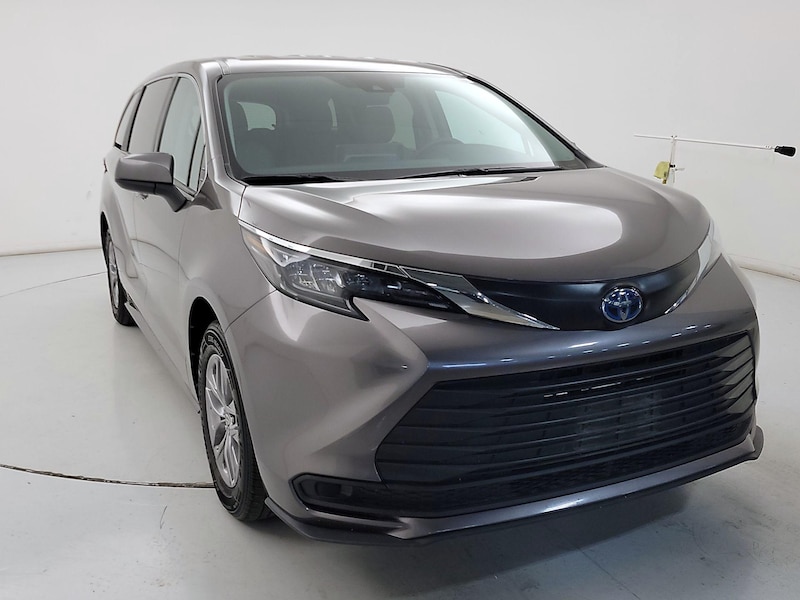
Vans and minivans
Today’s minivans are utility kings, with more cargo and passenger space than full-size SUVs, but with a more car-like driving feel. They're not a penalty box either, with features and options that wouldn’t be out of place on a luxury brand.
Minivan too small? Full size vans come in different heights and lengths, with some offering a dozen or more seats and roofs tall enough for a six-footer to stand upright.
Best minivans
Minivans offer flexible interior space for up to 8 people, unique family-friendly features, and an accessible design that makes it easy to load and unload all your passengers and their stuff.


1. Honda Odyssey
CarMax owner rating

2. Chrysler Pacifica
CarMax owner rating

3. Toyota Sienna
CarMax owner rating
Most reliable minivans
Whether you're searching for your first, or this is the latest in a long line, make it easy on yourself and start here.


1. Chrysler Pacifica
CarMax owner rating

2. Chrysler Voyager
CarMax owner rating

3. Toyota Sienna
CarMax owner rating
Research van and minivan models
FAQs about vans and minivans
The biggest differences between vans and minivans is are that vans tend to be more utilitarian and larger in size.
Vans typically have either an open-back cargo area behind the front seats, or multiple rows of seats, and are primarily used for transporting cargo or passengers.
Minivans are more family-focused, with most all having three rows of seats, and better size for everyday use.
A lot of minivans offer flexible seating with the ability to fold the seats into the floor, though Stow 'n Go is registered trademark of Chrysler.
Stow n' Go, which enables folding the second and third rows flat into the floor, is available on Chrysler Pacifica, Chrysler Voyager, Chrysler Town and Country, and Dodge Grand Caravan models; however, it's not a standard feature on all models. Additionally, hybrid and all-wheel drive models do not offer the ability to stow the second row as the space under the floor is used by the added powertrain components.
Other minivans do offer the ability to fold the third row flat into the floor, with Honda Odyssey, Toyota Sienna, Kia Sedona, Kia Carnival, and Nissan Quest all offering this feature.
The Toyota Sienna Hybrid has an EPA-estimated rating of 36 mpg in the city and 36 mpg on the highway, making it one of the most fuel-efficient minivans on the market.
Ready to find your van?
How we ranked these vehicles
Our "Best of" lists represent the most popular vehicles with CarMax customers. To create the Best lists, our analysts look at CarMax vehicle and sales data over a recent 6-month period and rank the top selling vehicles in order. Looking back over a 6-month period allows for the highest sample size possible while also providing up-to-date pricing information. Each list includes the specific dates used when it was generated. Some articles may include data points with lower sample sizes.
To create our "Most Reliable" lists, our analysts pull the top most reliable vehicles—in order—according to RepairPal rankings. RepairPal Reliability Ratings are based on the actual cost, frequency, and severity of unscheduled repairs and maintenance on make/model data for select 2006-2020 vehicles. The reliability of a specific vehicle may vary depending on its maintenance and driving history, model year, trim, and features. RepairPal Reliability Ratings are provided by RepairPal and CarMax is not responsible for their accuracy. Learn more about RepairPal reliability ratings.
We hope you found this information helpful. This content is intended to inform and is not meant to provide legal, financial or investment advice. We make every effort to provide accurate information, but please verify before transacting and consider talking to a qualified professional about your unique circumstances.
Statements of fuel economy or EV range are based on EPA and other third-party estimates for vehicles when new. Fuel economy and EV range will degrade with time and vary based on age, driving conditions, vehicle history, and other conditions. See fueleconomy.gov for more info.
Unless otherwise noted, information related to featured vehicles comes from third-party sources, including manufacturer information. Product and company names may be trademarks or registered trademarks of third-party entities. Use of them does not imply any affiliation with or endorsement by these entities.















